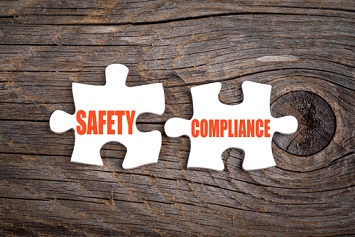On March 21, 2021, the Occupational Safety and Health Administration (OSHA) published a national emphasis program (NEP) to focus its enforcement efforts on preventing employees from contracting COVID-19 and protecting those who report unsafe working conditions.
In general, an NEP is a method by which OSHA temporarily focuses its resources on a specific danger or a highly hazardous industry. The newly published NEP targets “establishments that have workers with increased potential exposure to [contracting COVID-19] and that put the largest number of workers at serious risk.”
The goal is to reduce or eliminate the risk by focusing the agency’s enforcement efforts on “a combination of inspection targeting, outreach to employers, and compliance assistance.”
Industries, Worksites Targeted for Inspections
As to be expected, the NEP identifies many healthcare-related industries as those with a high risk of workers being exposed to COVID-19. They include physician and dentist offices, home healthcare services, ambulance services, general medical and surgical hospitals, and other medical institutions. It also identifies nonhealthcare industries that may be high-hazard such as meat processors, grocery stores, discount department stores, warehouses, restaurants, and correctional institutions. It should be noted the above are just some of the industries identified in the program.
OSHA carries out its enforcement activities, including worksite inspections to assess a company’s safety measures, through 10 regional offices. Each region has a yearly goal for how many worksite inspections it performs. (The agency’s overall goal is to perform approximately 1,600 inspections nationwide each year.)
The NEP dictates a “high percentage” (at least five percent) of the inspections should be focused on COVID-19 safety measures at companies in high-hazard industries. In other words, if the agency perceives your company to be a high risk for coronavirus exposure, you have a greater chance of receiving a visit from an agency inspector.
The NEP notes OSHA will continue to place the highest priority on inspecting worksites that have experienced a possible COVID-19 fatality. The next level of priority will be to inspect worksites about which the agency has received allegations of workers being exposed to the virus because of insufficient safety measures, such as a lack of personal protective equipment (PPE) being provided to workers.
OSHA anticipates the majority of the inspections will occur in healthcare industries. That’s based on the agency’s enforcement data showing a higher number of COVID-19 complaints, referrals, and incident reports coming from those workplaces.
If your company is inspected under the NEP and cited for a violation, you may need to prepare for a continuing relationship with the OSHA inspector. The NEP calls for a follow-up inspection for any employer cited for a violation during an inspection related to a COVID-19 fatality.
Protections for Whistleblowers
Finally, the NEP places an added emphasis on protecting “whistleblowers.” OSHA will focus its attention on investigating allegations that a company has retaliated against a worker who requests an agency inspection, reports COVID-19 exposure incidents, or complains about unsafe working conditions related to the virus.
The prohibition against retaliation isn’t new. If a company retaliates against an employee who makes a COVID-19-related complaint, however, it should anticipate being placed at the top of OSHA’s investigation list.
Now’s Not the Time to Ease Up on Safety Measures
After enduring the COVID-19 pandemic for more than a year, and with vaccinations being widely distributed, employers may be tempted to ease workplace safety measures related to the pandemic. OSHA’s NEP should be a warning bell that it would be unwise to give into that temptation.
You should continue to implement and enforce all necessary safety measures to protect workers from COVID-19 exposure because, sooner or later, OSHA inspectors are likely to come knocking.
Jake Crawford is an attorney in the Tulsa, Oklahoma, office of McAfee & Taft. You can reach him at jake.crawford@mcafeetaft.com.

